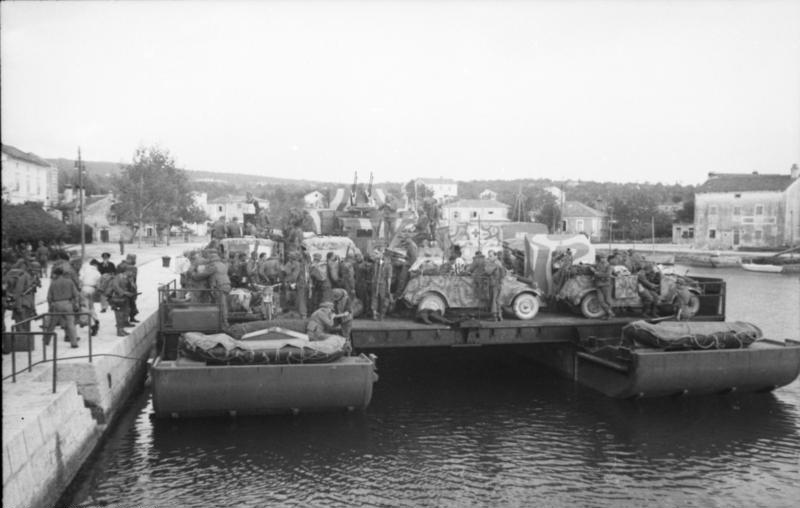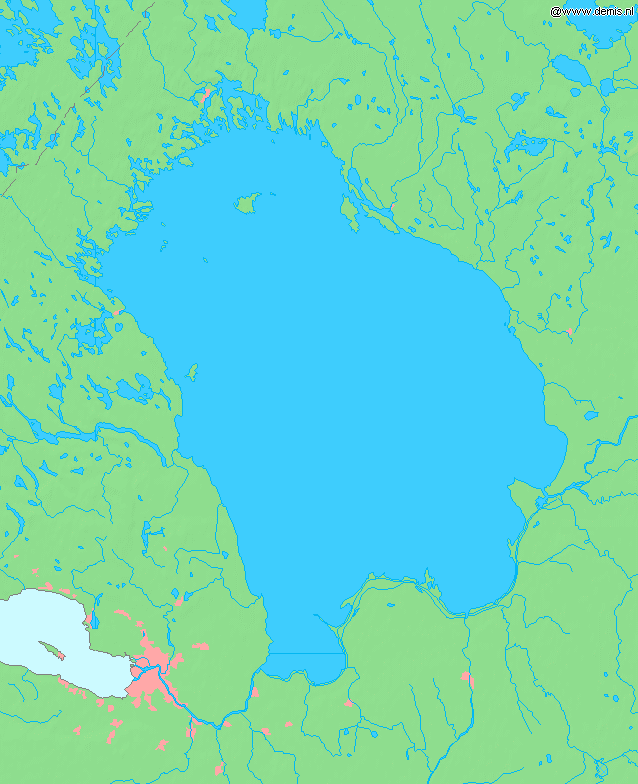|
XII Squadriglia MAS
The XIIª Squadriglia Squadriglia MAS (''Mezzi d'Assalto'') (Italian for "12th Assault Vessel Squadron") was a formation of the Italian Royal Navy (''Regia Marina'') which served on Lake Ladoga as part of the Axis siege of Leningrad during World War II. Background On 22 June 1941 the Axis, led by Nazi Germany, launched Operation Barbarossa, the invasion of the Soviet Union. During the summer of 1941 the Germans advanced into the USSR on three broad fronts, towards Leningrad in the north, Moscow in the centre, and Kiev in the south. By August 1941 the German Army Group North was on the outskirts of Leningrad, having occupied the Baltic states and northwest Russia, while the Finns had advanced south into the Viipuri peninsula, leaving the city surrounded and cut off from all communication by land. The city's only communication route was by water, over Lake Ladoga. To service and preserve this route, the Soviets collected a fleet of over 50 merchant vessels, protected by more t ... [...More Info...] [...Related Items...] OR: [Wikipedia] [Google] [Baidu] |
Italian Language
Italian (''italiano'' or ) is a Romance language of the Indo-European language family that evolved from the Vulgar Latin of the Roman Empire. Together with Sardinian, Italian is the least divergent language from Latin. Spoken by about 85 million people (2022), Italian is an official language in Italy, Switzerland (Ticino and the Grisons), San Marino, and Vatican City. It has an official minority status in western Istria (Croatia and Slovenia). Italian is also spoken by large immigrant and expatriate communities in the Americas and Australia.Ethnologue report for language code:ita (Italy) – Gordon, Raymond G., Jr. (ed.), 2005. Ethnologue: Languages of the World, Fifteenth edition. Dallas, Tex.: SIL International. Online version Itali ... [...More Info...] [...Related Items...] OR: [Wikipedia] [Google] [Baidu] |
Corvette Captain
Corvette captain is a rank in many navies which theoretically corresponds to command of a corvette (small warship). The equivalent rank in the United Kingdom, Commonwealth, and United States is lieutenant commander. The Royal Canadian Navy uses bilingual ranks, with ''capitaine de corvette'' being the French equivalent of lieutenant commander. Notable users of the rank of corvette captain in Europe include the navies of France, Germany, Italy, Spain, and Croatia. Other users include many Latin American countries. While the NATO rank code is OF-3, the official translation of the rank as per NATO STANAG 2116 varies between "commander junior grade" and "commander" (with the next senior rank being translated as "commander senior grade").NATO STANAG 2116 of 25 February 2010 Some NATO members class their corvette captains as OF-4 when they are serving afloat. Germany ''Korvettenkapitän'' is an OF3 rank equivalent to the German Army and German Air Force rank of ''Major''. Gallery ... [...More Info...] [...Related Items...] OR: [Wikipedia] [Google] [Baidu] |
Operation Iskra
Operation Iskra (russian: операция Искра , translation = Operation Spark), a Soviet military operation in January 1943 during World War II, aimed to break the Wehrmacht's siege of Leningrad. Planning for the operation began shortly after the failure of the Sinyavino Offensive. The German defeat in the Battle of Stalingrad in late 1942 had weakened the German front. By January 1943, Soviet forces were planning or conducting offensive operations across the entire German-Soviet Front, especially in southern Russia; Iskra formed the northern part of the wider Soviet 1942–1943 winter counteroffensive.Glantz p. 259 The operation was conducted by the Red Army's Leningrad Front, Volkhov Front, and the Baltic Fleet from 12 to 30 January 1943 with the aim of creating a land connection to Leningrad. Soviet forces linked up on 18 January, and by 22 January, the front line had stabilised. The operation successfully opened a land corridor wide to the city. A railroad was swif ... [...More Info...] [...Related Items...] OR: [Wikipedia] [Google] [Baidu] |
Tallinn
Tallinn () is the most populous and capital city of Estonia. Situated on a bay in north Estonia, on the shore of the Gulf of Finland of the Baltic Sea, Tallinn has a population of 437,811 (as of 2022) and administratively lies in the Harju ''maakond'' (county). Tallinn is the main financial, industrial, and cultural centre of Estonia. It is located northwest of the country's second largest city Tartu, however only south of Helsinki, Finland, also west of Saint Petersburg, Russia, north of Riga, Latvia, and east of Stockholm, Sweden. From the 13th century until the first half of the 20th century, Tallinn was known in most of the world by variants of its other historical name Reval. Tallinn received Lübeck city rights in 1248,, however the earliest evidence of human population in the area dates back nearly 5,000 years. The medieval indigenous population of what is now Tallinn and northern Estonia was one of the last " pagan" civilisations in Europe to adopt Christianit ... [...More Info...] [...Related Items...] OR: [Wikipedia] [Google] [Baidu] |
Siebel Ferry
The Siebel ferry (''Siebelfähre'') was a shallow-draft catamaran landing craft operated by Germany's Wehrmacht during World War II. It served a variety of roles (transport, flak ship, gunboat, convoy escort, minelayer) in the Mediterranean, Baltic and Black Seas as well as along the English Channel. They were originally developed for Operation Sea Lion in 1940, the cancelled German invasion of England. Siebel ferries continued performing after the war's end in 1945. Origins and development As German Army preparations for Operation Sea Lion got under way in July 1940, frustration soon grew over when and what types of ships the ''Kriegsmarine'' would supply for use in the planned Channel crossing. The immense task of converting hundreds of inland river barges and motor coasters into proper landing craft began, and the ''Kriegsmarine'' was unable to give the Army a date for their availability.Kieser, p.120 Anxious to begin landing exercises, ''Feldmarschall'' Walther von Brauchitsc ... [...More Info...] [...Related Items...] OR: [Wikipedia] [Google] [Baidu] |
Naval Detachment K
Naval Detachment K ( fi, Laivasto-osasto K) was a Finnish military detachment—specifically, a flotilla that operated on Lake Ladoga during World War II. Background The Continuation War began in the summer of 1941. The Finns, who had operated naval units on Lake Ladoga before World War II, began reestablishing a flotilla on the lake as soon as their troops reached its shores early on in the war. The headquarters was formed in Läskelä on 2 August 1941 and by 6 August, 150 motorboats, two tugs (used as minelayers) and four steam ferries had been transferred there. The tugs and ferries were equipped with 47 mm guns and machine guns. The Finns also established a number of coastal batteries on the shores and islands of Lake Ladoga. The only "true" Finnish warship on Lake Ladoga at that time was the obsolete ex-motor torpedo boat ''Sisu''. As the Finnish land forces advanced, new headquarters were established in the captured towns along the shores of Ladoga. The Ladoga flotil ... [...More Info...] [...Related Items...] OR: [Wikipedia] [Google] [Baidu] |
Helsinki
Helsinki ( or ; ; sv, Helsingfors, ) is the Capital city, capital, primate city, primate, and List of cities and towns in Finland, most populous city of Finland. Located on the shore of the Gulf of Finland, it is the seat of the region of Uusimaa in southern Finland, and has a population of . The Helsinki urban area, city's urban area has a population of , making it by far the List of urban areas in Finland by population, most populous urban area in Finland as well as the country's most important center for politics, education, finance, culture, and research; while Tampere in the Pirkanmaa region, located to the north from Helsinki, is the second largest urban area in Finland. Helsinki is located north of Tallinn, Estonia, east of Stockholm, Sweden, and west of Saint Petersburg, Russia. It has History of Helsinki, close historical ties with these three cities. Together with the cities of Espoo, Vantaa, and Kauniainen (and surrounding commuter towns, including the eastern ... [...More Info...] [...Related Items...] OR: [Wikipedia] [Google] [Baidu] |


.jpg)


